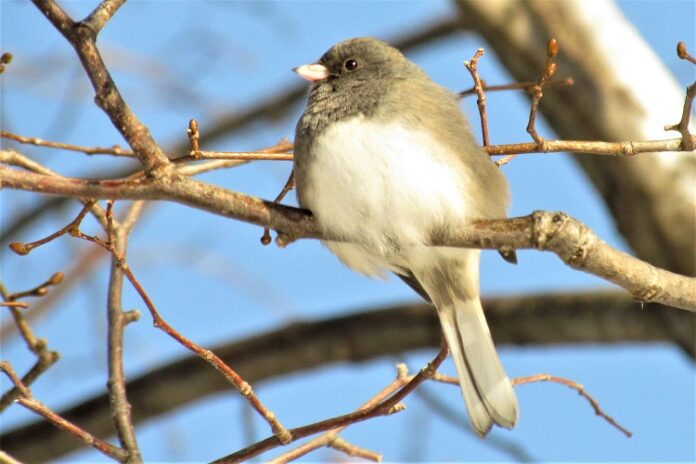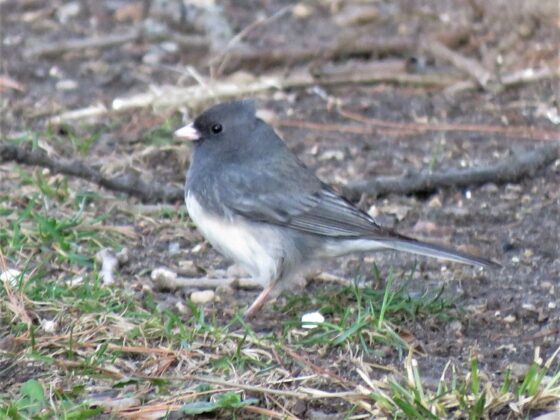They’re back.
I saw the first junco of the season at my feeder Oct. 2, and now a small flock comes every day for a meal. Just as the robin is a sign of spring, the junco is a sign that winter is on the way.
The juncos are one of Iowa’s most common winter birds. They are in Iowa from October to April. In spring they fly north to nest in the spruce and fir forests of Canada and the far northeastern part of the U.S.
There are four subspecies of dark-eyed junco. The most common one in our area is the slated-colored junco. It is a sparrow sized bird, about six inches long. The males are dark gray on their head, back, throat and the upper half of their breast. The bottom half of their breast and belly is white.
The females are very similar in color to the males but have a slight brownish tint on their head and wings. From a distance, it is difficult to tell sexes apart. Both sexes show white outer tail feathers when they fly, and both have a pinkish bill.
Because they nest and breed in Canada, we seldom get to hear the bird’s mating song. It is a high pitched, non-distinct trill. This time of the year in Iowa, we do hear their alarm call, which is a metallic clicking sound.
William Rowan, a Canadian scientist, used this species of bird in a very famous experiment in the 1920s. He wanted to find out the cause of bird migration and breeding behavior. He used juncos in his experiment to prove that the trigger for these behaviors was the amount of sunlight to which the birds were exposed.
Bird banding studies have also shown an interesting pattern in their migration. The adult females migrate the greatest distance south in the winter. They fly to the southern parts of the U.S. and into northern Mexico.
The juncos in Iowa are older males and young females. The young males show the least amount of migration. They stay in the northern parts of the Great Lakes states. Scientists speculate that the shorter migration helps the young males claim preferable territory when the breeding season occurs.
Juncos exhibit a very strong flocking behavior. Banded birds have shown that the flocks stay together for years at a time. The flock also has a definite pecking order. Some members do not eat until the dominate birds have eaten. At bird feeders they will eat millet, cracked corn and sunflower seeds. They prefer to feed on the ground, eating the seeds that other birds have spilled from the feeder.
Some studies have shown that the population of juncos had declined over the last few years. Ornithologists attribute this population decline to the increased usage of pesticides and herbicides that destroy the bird’s natural food supply.
These handsome winter birds should be appreciated for their role in the environment as consumers of noxious weed seeds, especially ragweed. When you see juncos this winter, think about these little birds helping to reduce the hay fever pollen count next summer.


















